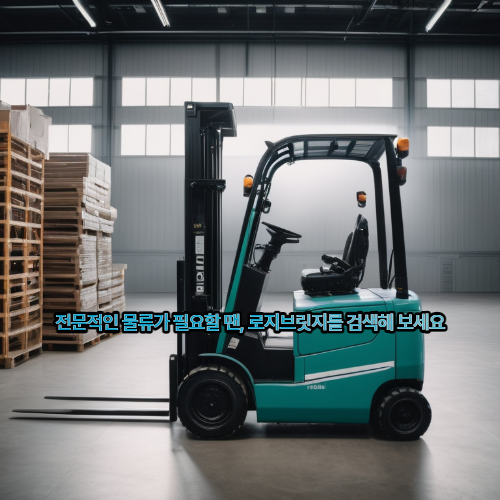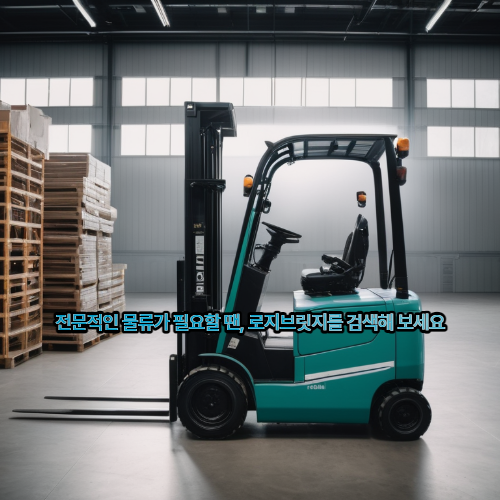

Advanced Guide to Running a Small 3PL Business in Korea: Operational Tactics & Risk Management for 2024
※ This article is a summarized excerpt from a broadcast by Dr. Seong-Gu Yoon, CEO of SGY Company and logistics expert. For full context and detailed explanations, please watch the original broadcast.
Hello again, LogiBridge subscribers.Following up on the previous episode, today we continue with Part 2 of our series on launching and running a small 3PL business in Korea. In Part 1, we covered what 3PL is, the market landscape, and initial startup advice. Today, I’ll dive deeper into practical operational strategies and share concrete tips for success.
As someone currently operating both a parcel delivery and a fulfillment business, I’ll speak directly from real-world experience in the small-scale 3PL sector.

1. Building Trust Through Inventory Accuracy
The most critical aspect of running a small 3PL operation is earning trust from your clients (shippers)—and the key to that is accurate inventory management.Errors during inbound counting or outbound picking can quickly lead to conflict. If the system shows 500 items but only 300 are physically available, clients may assume negligence. In fact, my company once had to cover a loss of over 32 million KRW due to such a mistake.
To avoid this, ensure a meticulous process from inbound to outbound and implement a reliable Warehouse Management System (WMS).

2. Define Your SLA (Service Level Agreement)
Clearly outlining your responsibilities in a formal SLA is non-negotiable.When signing a contract with a shipper, define whether your team handles inbound, storage, outbound, packaging, and returns. For example, if your operation does not support return processing, that should be explicitly stated in the agreement.
In my early days, I made the mistake of saying yes to every client request without a clear SLA. That backfired.A transparent SLA helps reduce misunderstandings and builds mutual trust.
3. Invest in Practical Equipment
For small businesses, large automation systems are not practical.Instead, consider simple equipment like auto-taping machines and belt conveyors.My team once used 38 different types of EPS boxes, but after analyzing shipping data, we reduced this to just 6. This improved space efficiency and cut costs.
You can also buy used shelves or inexpensive packing tables (some cost as little as 30,000 KRW).A WMS is essential—choose software that is lean yet functional.

4. Choose the Right Delivery Partner
Selecting your courier company carefully is key.Consider delivery reliability, pickup times, and cost efficiency.
If your shippers mostly send heavy goods, partnering with a freight-focused courier or alternatives like Logen may be better than the big three (CJ Logistics, Hanjin, Lotte).Using multiple couriers provides flexibility.
Also, build a CS and operations manual to ensure consistency in response.For instance, we’ve improved customer satisfaction by processing returns within 48 hours, thanks to a structured manual.
5. Manage Risks Carefully
Seasonal fluctuations can be a major risk.Demand for cold-chain logistics spikes in summer. If you only offer ambient storage, you might fall behind.Conversely, if you run a cold storage facility, be ready to handle seasonal staffing and profitability challenges.
By 2024, the vacancy rate of cold-chain warehouses reached 41.2% due to oversupply and slowing demand, intensifying competition among small players.
6. Foundational Tips for New Entrepreneurs
Here are several critical points for those planning to start:
-
Clarify your target market: Will you serve small-parcel, cold-chain, or B2B clients?
-
Ensure sustainable margins: Competing only on price can destroy your profitability.
-
Implement WMS from the start: Efficient inventory and shipping label management is essential.
-
Plan for peak seasons and workforce scheduling: Think ahead for holidays and year-end.
-
Operate it yourself initially: Learn every task—from printing labels to packing—before hiring staff.
7. Mindset and Motivation
A successful 3PL business starts with a clear vision.From 60 pyeong to 600 pyeong, then 6,000 pyeong—you must think big.
I started with just a 40-pyeong warehouse, manually labeling and shipping packages. That humble start laid the foundation for the company I run today.
To everyone preparing for launch or already in the logistics field: Stay focused, stay strong.And to our dear LogiBridge subscribers—wishing you health and happiness always.Thank you.
#3PLStrategy, #SmallLogisticsBusiness, #KoreaLogisticsTips, #InventoryAccuracy, #SLAfor3PL, #WMSsoftware, #FulfillmentStartup, #WarehouseTips, #ParcelDeliveryKorea, #ColdChainRisk, #3PLManagement, #CourierSelection, #LogisticsCS, #StartupWarehouse, #KoreaEcommerceLogistics, #LogisticsEntrepreneur, #WarehouseAutomationLite, #ReturnsHandling, #ShippingLabelTips, #KoreaSMELogistics, #FulfillmentAdvice, #ScalingLogistics, #LogisticsProcess, #SeasonalLogistics, #LogisticsTools, #AffordableWMS, #LogisticsEfficiency, #3PLGrowth, #FulfillmentCenterStartup, #SGYCompanyInsights